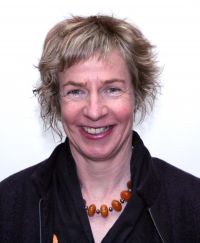Offsetting emissions

Chief scientist Dr Fiona Carswell.
Landcare Research chief scientist, Dr Fiona Carswell, responds to a suggestion by the Parliamentary Commissioner for the Environment, Dr Jan Wright, that marginal hill country should be reverted back to native bush to offset greenhouse gas emissions.
New Zealand’s recent decision to take on binding commitments to greenhouse gas reductions by 2030 means that we are once again looking at incentives to increase domestic forests while we work out how best to enable a transition to a low carbon economy. Plantation forests have thus far provided a handy “offset” to a portion of our increasing emissions (largest increases are carbon dioxide emissions from road transportation). However, the rate of planting new plantation forests has declined while timber harvesting continues apace.
The Parliamentary Commissioner for the Environment (PCE) recently examined what could be done about the biological gases from agriculture (methane and nitrous oxide). While the PCE report concludes there are no existing silver bullets to reduce the gases themselves, it suggests we take a fresh look at forests. How about using natural regeneration of over one million hectares of the hill country most unsuited to pastoral agriculture to help us establish a substantial new native forest?
While the opportunity costs may previously have been too high, we now have strong markets for some of the co-benefits for this land use change. Mānuka honey can be a valuable “by-product” of the natural regeneration process. Other “nurse” crops involved in natural regeneration can also provide protein for bees (in pollen), which can improve the overall carrying capacity of a honey harvest area. Let’s not forget that mānuka is also one of the best of the indigenous trees in reducing erosion. And after mānuka? Well, in the North Island you then get the other honey species – rewarewa, kāmahi, tawari, rātā. Most of these will happily co-exist with podocarp trees – the giants of our forests with the best ability to store the most carbon. Add to this biodiversity co-benefits and some well managed eco-tourism and it starts to look both economically and ecologically sustainable over an intergenerational time period.
So, what’s Landcare Research’s role here? Evidence. Our interest is anything to do with land (and this very much includes people, in our view). We work from sub-catchment to national scale and ask biologists to work with greenhouse gas researchers and economists to evaluate whether proposed solutions are economically viable. And yes, many landowners have already opted for the “good life” and are thriving through new carbon forests on the lands most marginal for agriculture, potential intensification of the best land, diversified products (such as honey), and eco-tourism services.
I’ve just come from the launch of the 2050 Ecological Vision for Banks Peninsula. The vision is both ambitious and inclusive. It provides for conservation, restoration and thriving productive landscapes. The peninsula also happens to include one of the best managed indigenous carbon sinks in the country – Hinewai Reserve. The Maurice White Native Forest Trust has worked with nature’s own processes to transform a mosaic of old-growth remnant forest and hill country pasture into over 1200 hectares of secondary (“renewed”) forest that includes walking trails and habitat for birds, lizards and many rare plants. The reserve reminds us of what is possible with commitment and a little time. Even the setback of a lightning-induced fire in 2011 has been overcome with extra time and natural regeneration that ensures that the progress towards tall forest continues. The 2050 Ecological Vision for Banks Peninsula provides for four such ecological treasures. If entirely regenerated, the peninsula would provide the service of offsetting 970 kilotonnes of CO2 emissions per year for a few hundred years.
Banks Peninsula has a great chance of proving that nurturing mixed-use landscapes is both economically viable and ecologically possible – my kids will certainly inhabit a very different peninsula from the one where they currently live. Bring on those forests of their future!
Bio:
Fiona was recently promoted to the chief scientist role after leading the Enhancing Biodiversity Portfolio. After graduating from the University of Auckland with a master’s degree in botany she cut her teeth on greenhouse gas research at the University of Edinburgh. Fiona remarks that “there’s nothing quite like trying to measure carbon exchange over the Amazon rainforest to realise that people play a driving role in this science”. Since that time she has straddled the boundary between biophysical research and socio-ecological systems. A career highlight was running Landcare Research’s “Emissions-Biodiversity Exchange for the 21st Century” programme (EBEX21) for 10 years (a natural regeneration programme for landowners wanting to grow new forests for carbon sequestration and biodiversity gain). “During this time I had the pleasure of working with landowners who take immense pride in their stewardship role – always wanting to leave the land in a better state than when they inherited it.”
Gallery
Comments
Please note - these comments are moderated

